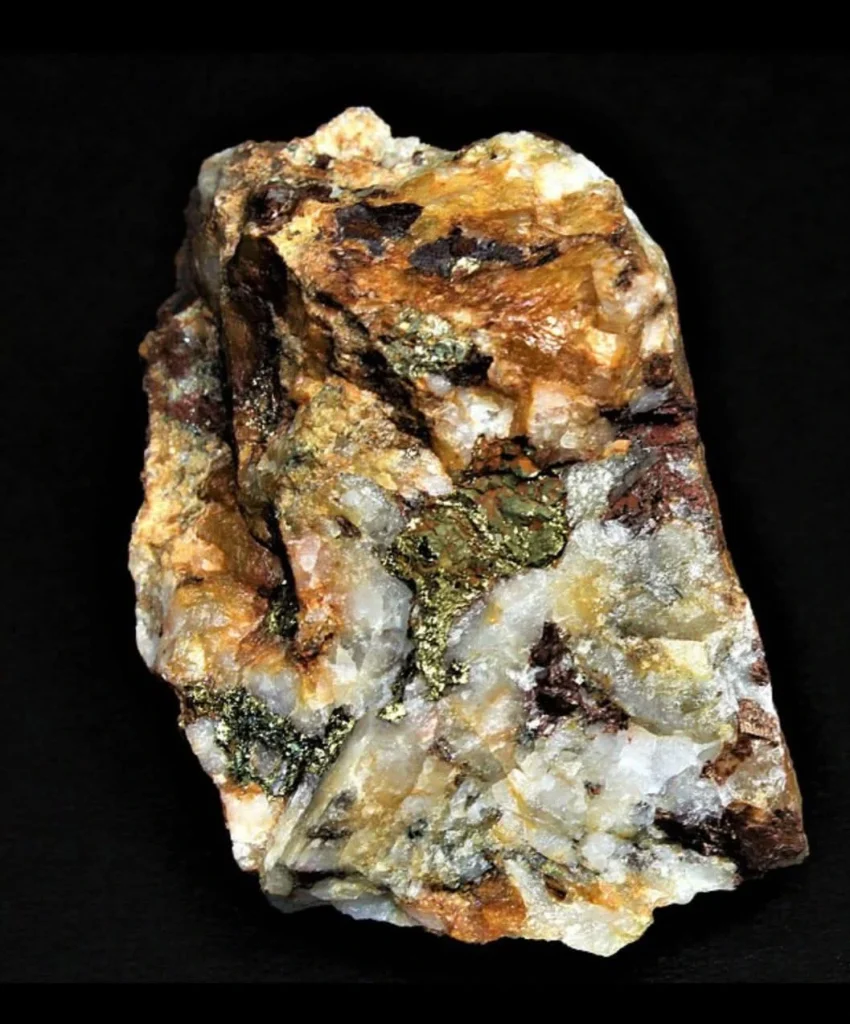Finding gold starts long before panning or drilling it begins with understanding how to recognize gold bearing rocks and the geological clues that point toward hidden mineralization. Gold does not appear randomly; it follows predictable geological patterns shaped by heat, pressure, fluids, and structural movements over millions of years.
Whether you’re a prospector hoping for your first discovery, a geologist mapping exploration targets, a miner planning field operations, or simply a curious enthusiast fascinated by Earth’s natural resources, learning how to recognize gold-bearing rocks gives you a powerful advantage in the field. This knowledge allows you to read the landscape like a geological map, identify key indicators such as quartz veins, sulfide-rich zones, iron-stained rocks, structural contacts, and alteration patterns, and distinguish rocks that merely look interesting from those that truly signal gold.
In this comprehensive guide, you’ll learn the most reliable rock indicators of gold, how to spot them during fieldwork, and simple tests you can perform to confirm whether you may be standing on a gold bearing zone. Wherever you are in the world Nigeria’s greenstone belts, Africa’s gold provinces, or other global mineral regions understanding how to recognize gold bearing rocks is the foundation of successful gold exploration.

1. Quartz Veins: The Most Common Host of Gold
Quartz is one of the strongest indicators of gold mineralization around the world. Gold often forms inside white quartz veins that cut through host rocks.
How to Identify Gold-Bearing Quartz
Look for:
- Rusty colors (yellow, orange, brown) caused by iron staining
- Black streaks from manganese or other minerals
- Honey-colored or smoky quartz
- Tiny sulfide crystals (pyrite or arsenopyrite)
Simple Field Test
Break a fresh piece of quartz and check:
- Are there tiny metallic grains?
- Do the sulfides reflect light like metal?
These may indicate gold lock-in.
2. Sulfide Rocks: Where Invisible Gold Hides
Most gold deposits are associated with sulfide minerals. These minerals often contain “invisible gold,” trapped within their crystal structure.
Common Gold-Related Sulfides
- Pyrite (fool’s gold)
- Arsenopyrite
- Chalcopyrite
- Galena
How to Identify Them
Signs include:
- Shiny metallic crystals
- Heavy and dense pieces
- A strong sulfur smell when crushed
- Silver or gold like reflections
Where sulfides exist, gold may be nearby or inside them.
3. Iron Oxides: Rusty Rocks That Indicate Gold
Iron oxides form when sulfides break down, leaving rusty stains. These stains are often found near gold bearing zones.
Types of Iron Oxides Linked to Gold
- Hematite – deep red
- Limonite – brown/orange
- Goethite – yellowish
These rocks act like signposts pointing toward gold bearing veins.
4. Greenstone and Schist: Classic Host Rocks in Gold Belts
Many world class gold deposits are found in greenstone belts and metamorphic schists.
How to Recognize Them
- Greenish tint due to chlorite or epidote
- Found near faults and shear zones
- Frequently cut by quartz veins
If you see folded schist + quartz veins → you’re in a great location.
5. Ultramafic Rocks: Deep-Earth Rocks Associated with Gold
Though less common, gold sometimes occurs in:
- Peridotite
- Gabbro
These rocks originate from the deep mantle and often develop fractures where gold rich fluids flow. Look for quartz veins or altered zones cutting through these rocks.
6. Breccia Zones: Evidence of Geological Movement and Gold Fluids
Breccia forms when rocks break apart and are cemented back together.
Why it matters:
- Breccia channels hydrothermal fluids the same fluids that carry gold.
- These zones often contain veins or pockets of mineralized material.
If you find angular broken rock fragments cemented by quartz or iron oxide, investigate further.
7. Contact Zones: Where Two Different Rocks Meet
Gold often precipitates when mineral rich fluids encounter a sudden change in chemistry or temperature.
This usually occurs at:
- Quartz touching schist
- Limestone meeting intrusive rocks
- Granite contacting greenstone
These contact boundaries are some of the richest places to find gold veins.
8. Heavy Mineral Indicators: Clues That Gold Is Nearby
Certain minerals commonly appear alongside gold because they form under similar geological conditions.
Key Heavy Minerals to Look For
- Magnetite
- Garnet
- Tourmaline
- Rutile
- Zircon
Finding these minerals especially in placer deposits means you are close to the source. Recognizing gold bearing rocks is the first step, but confirmation requires testing. Start by:
- Crushing samples and panning for visible gold
- Using a hand lens for metallic grains
- Checking for sulfides and oxidation
- Observing rock contacts, veins, and fractures
Gold rarely occurs alone. It follows geological patterns and understanding these patterns puts you on the path to discovery.
At Eartho-Bi, we transform geological knowledge into practical exploration strategies, using proven scientific methods to deliver efficient, responsible, and sustainable mineral discovery across Nigeria. Our integrated approach rooted in deep geological expertise and field-driven innovation continues to uncover new mineral potential within the country’s basement terrains.
To deepen your understanding of how nature reveals hidden mineral wealth, explore our latest guide on identifying natural indicators of gold in the field: Natural Signs of Gold in Rocks and Soil.